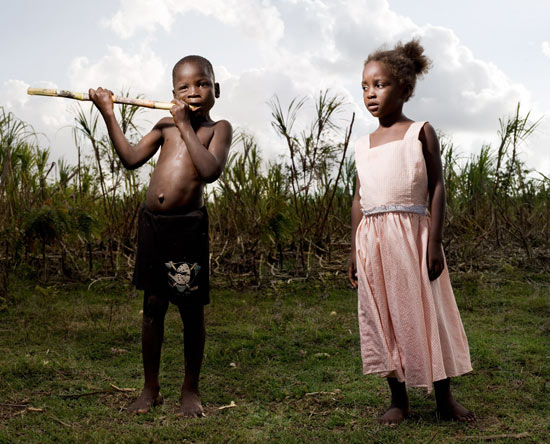
Bateys are company towns where migrant sugar workers live. They can be found in Cuba and the Dominican Republic.
According to Wikipedia, very year since 1933, seasonal immigrants from Haiti have arrived to work the sugar harvest in the Dominican Republic. Photographer Reed Young had an eye-opening experience after he was invited by a friend to visit a batey in the DR. Read his story below.
"Lost in the vast sugarcane fields of the Dominican Republic, there are hundreds of small villages called Bateys. These underdeveloped towns were established in the beginning of the 20th Century to house migrant Haitian workers during the sugarcane season. The Bateys were intended to be seasonal towns. But in the last 40 years, the Dominican Republic has become a symbol of hope and prosperity for the Haitians. Because of this, more and more Haitians have discontinued going back to Haiti after the season and have started families in the Bateys.
In theory, this sounds ideal. But the infrastructure for a permanent population remains unmet in the Bateys. The schools have little to no funding; there is no running water or plumbing; and trash collection is obsolete. Another problem plaguing these small communities is the lack of legal documentation of citizenship. Without the basic rights as a citizen, most of these people are denied education and healthcare. This has created a significant social status problem, which will only improve with the help of humanitarian organizations.
My good friend Rachel has been doing volunteer work in a small Batey called Las Pajas for the last six months. Every day she works in the community, attempting to establish sustainable outlets for the people to overcome the horrendous living conditions. She has begun a women's group and she also works regularly with the children to educate them about the importance of planning for a more prosperous future.
A few weeks ago, Rachel invited me to Las Pajas, an eye-opening, unbelievable experience. Even though the problems plaguing the Bateys are similar, each person had a unique story to tell. They were so proud when I asked them if I could take their photograph. Most of them have never seen themselves in anything but a mirror, so each night I downloaded the images to my computer and did slideshow for the people I shot. They all screamed, laughed and yelled things to each other in Creole that I didn't understand. But it was obvious they were very excited and honored.
In the end, I was the biggest beneficiary of all. I was honored to learn about their lives. Despite having nothing but each other, they are more content than most people I meet in the more developed world. I also discovered that money alone isn't the solution to helping impoverished people. What they need more is education, healthcare and correct nutrition.
I was struck by how these Haitian people view themselves as extraordinarily lucky compared with their families back home. Although the conditions of the Bateys are deplorable, they're nothing compared to those that exist in Haiti where the current food crisis affects 60 percent of the country's people.
Who would think that people with no education, no access to healthcare and terrible sanitary conditions would consider themselves lucky? These are the lucky Haitians."
